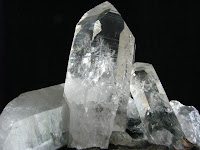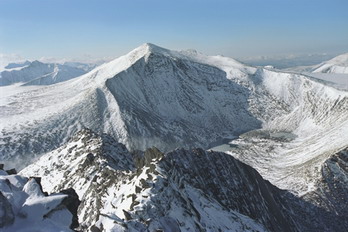Russia,
containing The Great European Plain, also offers a vast mountain
range, called the Ural Mountains. The Ural Mountains, made over 300
million years ago, are located at about 64 degrees North latitude,
and 61 degrees North longitude. This distance is about 800 miles away
from Moscow, Russia. Compared to
the land in the Eastern part of Russia, The Ural Mountains are raised
above sea-level. The Ural mountain range
creates a border between Europe and Asia and has many physical
features. You may ask, "Well, how were they created?" The
Ural Mountains were created by continental plates underground
colliding together overlapping one another creating a fold on the
surface, called a continental convergence. During this process, the
mountains have created some many interesting characteristics and
features. The Ural Mountains, containing hog backs and tors along the mountainside, create an interesting feature of the Ural Mountains' formation.
Hog backs are basically just eroded folds in the land that are
created by the movement of plate tectonics. Tors are piles of large,
core stones along a landscape.
The tallest mountain in the Ural Mountain-range is called,
Mt. Narodnaya. Mt. Narodnaya, rising at 1,895 meters (6,217 feet),
creates a weathering limited landscape. A weathering limited
landscapes is one that has no vegetation. Because of the frigid
temperature ranging from 50 degrees celsius and 30 degrees celsius
during the Winter, it makes it hard for any type of vegetation to
grow. Much of the mountain sides have valleys, streams and even
caves. The Ural Mountains have a karst topography, meaning, the
landscape of the mountains have severely eroded sedimentary rocks
including sandstone and limestone. Most of the karst topography in
the Ural Mountains are found in the basin of the Sylva River, which
is a tributary of the Chusovaya River, including many karst sinks,
caves, and underground streams. However, on the Eastern side of the
slope of the Ural's, less areas of karst topography is apparent.
 |
| Platinum Mineral found in the Ural Mountains (Above) |
 |
| (Above) Beryl Mineral found deep in the ground |
About 48
species of minerals and ores have been found in the Ural mountains
including, Quartz, Andradite, Beryl and even Platinum.
 |
| Quartz Crystals (Above) |
 |
| Mount Elbrus (Above) |
The tallest mountain in all of Europe, even after Mt. Narodnaya, is called, Mt. Elbrus. Mount Elbrus is 5,642 meters (18,510 feet) being the tallest mountain in Europe. It's physical features include a colluvium, mass-wasting landscapes that make debris fall to the bottom. Mass-wasting is basically the gravitational effect that gravity has on physical parts of the land, such as, rocks in general, making them fall down to the base. As you can see in the picture, at the top of Mt. Elbrus, it is covered in snow, while the base of the mountain is warm and green. This shows that the elevation plays a role in the weather and climate in the surrounding area around Mt. Elbrus.


thanks for th info
ReplyDelete